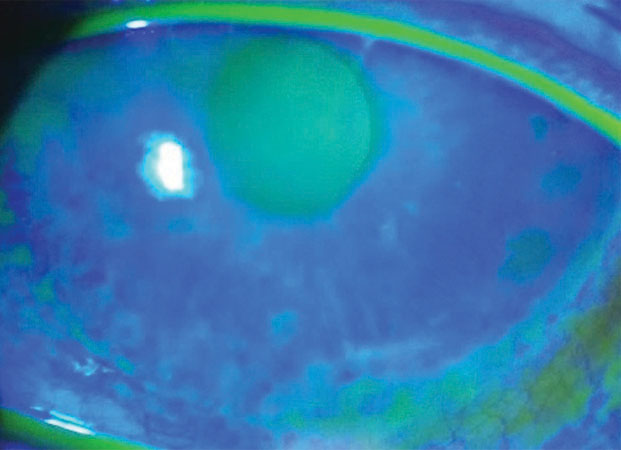 |
|
In a cohort of African American and Hispanic children, higher BMI was associated with dry eye symptoms. Photo: Chandra Mickles, OD. Click image to enlarge. |
In research presented at ARVO 2024 last week, researchers sought to determine the extent of influence on dry eye symptoms that can be attributed to lifestyle factors including screen time, outdoor activities, diet and body mass index (BMI) in children aged 5 to <18 years. They found that high BMI is a significant risk factor for dry eye symptoms in children between the ages of five and 18.
A total of 160 children (76 boys, 84 girls) presenting at the Illinois Eye Institute underwent a comprehensive eye exam and were surveyed regarding electronic screen time and filled out a modified, child-friendly OSDI. The second OSDI question (eyes that feel gritty) was modified to “eyes that feel something inside.” The seventh OSDI question (driving at night) was removed based on the age of the study population and the eighth OSDI question (working with a computer or bank machine) was modified to “using an iPad or tablet.” The examiner was allowed to repeat questions if the child did not understand the question. Parents were surveyed on their child’s screen time, diet and outdoor activity. BMI was calculated using measured height and weight.
High BMI was a significant risk factor for dry eye symptoms in children aged five to <18 years; however, the OSDI score was not associated with age, race, gender, screen time, outdoor activities and diet.
The mean OSDI score was 14.7 ±15.2, with 16.9%, 8.8% and 12.5% of the children having mild, moderate and severe dry eye symptoms, respectively. Average screen time per week was 9.2 and 8.5 hours reported by children and parents, respectively. Significant correlation was found between the screen time reported by children and parents. Multiple regression showed that high BMI was a significant risk factor for dry eye symptoms. BMI was significantly correlated with age and outdoor activity.
“Our studies suggest that dry eye disease is frequently underdiagnosed in pediatric patients,” says Lindsay Sicks, OD, of the Illinois Eye Institute, one of the researchers. “This study examined lifestyle risk factors associated with dry eye symptoms in a population of primarily African American and Hispanic children.” There is mixed literature on the connection between BMI and dry eye and meibomian gland dysfunction in adults, and even less evidence in children, she points out. “We wanted to investigate this association among our clinic population, which is primarily African American and Hispanic. In our data analysis, multiple regression showed that high BMI was a significant risk factor for dry eye symptoms in children; however, the OSDI was not associated with age, race, gender, screen time, outdoor activities, or diet.”
Dr. Sicks notes the mechanism connecting BMI to dry eye is unclear at this time. “This ARVO study specifically looked at the connection to dry eye symptoms, but there are a lot of other facets to dry eye,” she explains. “In a separate analysis of this cohort (forthcoming OVS publication, Fall 2024), we found evidence that BMI is correlated to meibomian gland morphological changes (atrophy and tortuosity) as well as survey information collected about diet.” More analysis is needed to link the signs to the symptoms and to assess the relationship between all of these variables, Dr. Sicks stresses.
“I don't think we can extrapolate what we find in our particular pediatric population to the general adult population at this point,” Dr. Sicks adds. “For one, our survey population was primarily African American and Hispanic. To compound the issue, we do not have validated cutoffs for many diagnostic tests in children nor symptom questionnaires that have been validated in a pediatric population.”
Original abstract content @2024 Association for Research in Vision and Ophthalmology.
Pang Y, Parikh M, Sicks L. Lifestyle risk factor for dry eye symptoms in children aged 5 to <18 years. ARVO 2024 annual meeting. |


